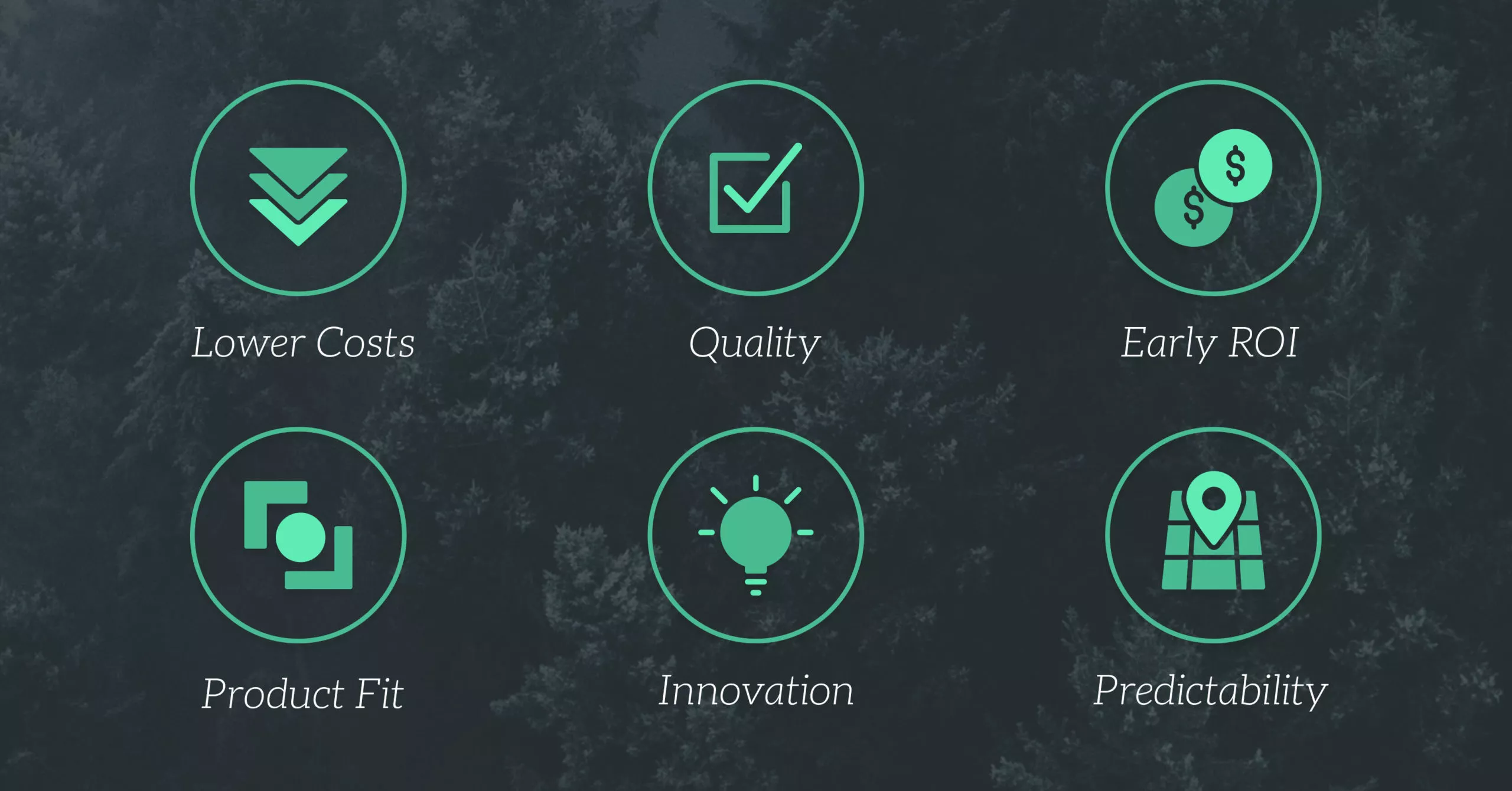Why Do An Agile Transformation?
Adopting Agile is never about adopting an Agile methodology. It’s always about delivering better business outcomes. Agile process is—at best—a means to an end. At worst, it can be a distraction that results in focusing on the wrong changes for the enterprise.
Understanding your business goals will align your organization around common outcomes, help you explain your Transformation strategy, and identify necessary tradeoffs. It’ll also help identify whether or not the Transformation is headed in the right direction.
Some of the common goals of going Agile are:
Predictability
Agile tends to focus on adaptability as a key driver, but one of the most frequent stated goals of an Agile Transformation is predictability. Predictability means that we can reliably make and meet commitments to our customers. Predictability builds trust with our internal stakeholders, our customers, and our markets.
Quality
It’s common for quality to suffer when organizations scale and change—and quality issues can surface in a number of areas of the business. Sometimes we’re missing features and functionality. Sometimes it’s extrinsic quality problems in the form of defects. Other times, it’s intrinsic quality in the form of technical debt. Quality issues erode trust with our customers and make our software difficult to manage.
Cost Savings
Most companies adopt Agile because they believe that it’s more efficient and that it will reduce costs. But, they are usually so overloaded with work that the cost savings are often difficult to achieve. What is achievable is greater assurance that your people are focused on the problems whose solutions have the highest value.
Early ROI
Many organizations are struggling with long delivery cycles which make it very difficult to get feedback from customers. This lack of feedback puts a burden on the organization in the form of longer investment cycles which keep the organization from realizing revenue. Early ROI means that we can begin putting product into market in smaller increments, begin charging for the product sooner, and realizing revenue faster.
Product Fit
One of the common goals of adopting Agile is making sure that we’re building the right product for our customers. Agile gives us the opportunity to deliver in smaller batches, get frequent customer feedback, and change direction when we learn new things about our customers and their requirements. Delivering on time only makes a difference if you’re delivering the product your customers need.
Innovation
We know that well-formed teams, operating in the right market and in the right organizational context, can take advantage of Agile methodologies to exploit uncertainty. They’ll be able to test product hypotheses, assess customer demand, and are free to explore what works.
As companies grow, sometimes they can lose the ability to innovate. But we know that well-formed teams, operating in the right market and in the right organizational context, can take advantage of Agile methodologies to exploit uncertainty.
It’s not uncommon for organizations to desire all of these outcomes at the same time. While that’s fair, sometimes these business drivers compete with one another to pull the Transformation in different directions.
The Business Case for Agile
It’s important to understand why we’re making the investments necessary for an Agile Transformation before we get started—and what we hope to gain from our efforts. We want to understand what changes we’d like to make, and have a well-formed point of view about how these changes are going to lead to the business outcomes we seek to achieve.
A business case will allow us to clearly state what our objectives are for the Transformation and give us a way to measure if we are successful.


